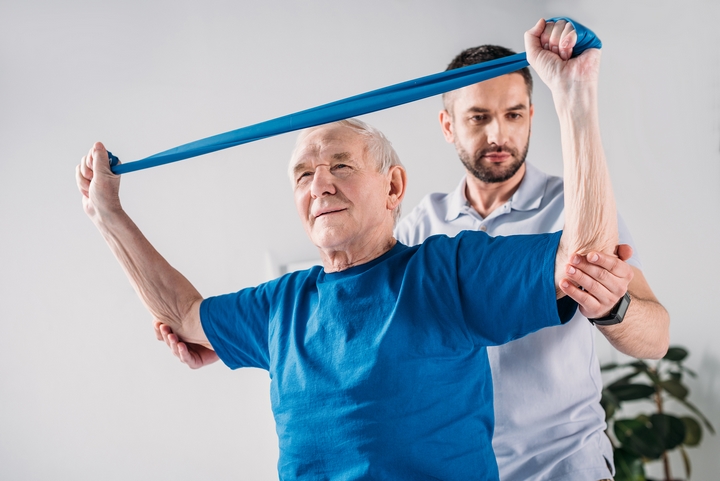
When you experience an injury or illness that has resulted in ongoing struggles with parts of your body, it can lead to a range of emotions such as fear, frustration, and disappointment as you wonder if it will ever return to normal.
While surgery has been successful in repairing damage done, sometimes the ailment is not serious enough to warrant this. In these instances, physiotherapy has been successful and the following are 5 parts of the body that such a course of action can help you with.
1. Knees

Physiotherapy can help bad knees and enhance the strength and flexibility of any arthritic joints present. Physiotherapists are able to identify the source of pain and treat it with stretching and exercise. A thorough assessment allows physiotherapists to determine the root cause of the problems by looking at how joints move, their weakness, and muscle tightness that may be inhibiting correct movement.
Combined with medication, physiotherapy is considered as effective as arthroscopic surgery in the treatment of arthritic knees. Physiotherapists prescribe the right course of action, such as specific exercise regimens and custom orthotics if an imbalanced gait is causing the problem. Unlike surgeons, physiotherapists tend to look at the entire picture with the goal of overall wellness in mind.
2. Back

Muscle strain, poor posture, or arthritis often cause back issues. Treatment depends on the source of the problem, but physiotherapists have proven capable and effective in dealing with many of them through the strengthening of the muscles, weight management, and repatterning the muscles through exercise.
A series of dynamic exercises can change the coordination of the muscles. There are more than two dozen muscles in the lower back and they need to be strengthened in order for them to work properly.
3. Pelvis

The pelvic floor muscles often suffer from spasms after injury, pregnancy or abdominal surgery. Physiotherapy techniques deal with the pelvic floor disorders by understanding the root cause of the problem.
The pelvic floor muscles support abdominal areas, the spine, bowel functions, and the bladder. Dysfunctions manifest in a number of ways such as abdominal pain and urinary incontinence and these problems often go undetected by such tests as ultrasounds or MRIs. By embracing relaxation techniques and core strengthening exercises, pelvic problems can be treated.
4. Cardiovascular system

Cardiovascular physiotherapy deals with issues with joints and muscles. A supervised exercise regimen supervised by a physiotherapist can easily treat the problems. Each patient’s symptoms vary depending on the nature of cardiac diseases. A medical assessment is carried out to determine an appropriate exercise program according to the problems experienced by the patient.
Strength training and aerobic training are the major interventions that help in the treatment of cardiovascular disorders. Aerobic conditioning enhances the ability of the lungs and heart to pump blood efficiently throughout the body. Resistance training and strength training can significantly reduce the risk of strength training. It is extremely important to follow the exercise program recommended and implemented by the physiotherapist to get the desired results.
5. Brain

Physiotherapy can help in the treatment of degenerative neurological disorders, such as Amyotrophic Lateral Sclerosis (ALS) or Multiple Sclerosis (MS). These disorders degrade the neurological function over time, resulting in lost coordination and functioning of body parts.
Physiotherapy focuses on the strategies that try to compensate for the lost neurological function. Exercises preserve the remaining function, balance, and joint mobility. Physiotherapists also provide education to the patients on their condition, allowing them to better understand what they need to do to see improvements. Physiotherapy also helps in the treatment of traumatic neurological conditions. Some of the examples of these conditions include spinal injuries, concussions, and nerve injuries. Physiotherapy can help people with such injuries and allow them to lead normal lives.









